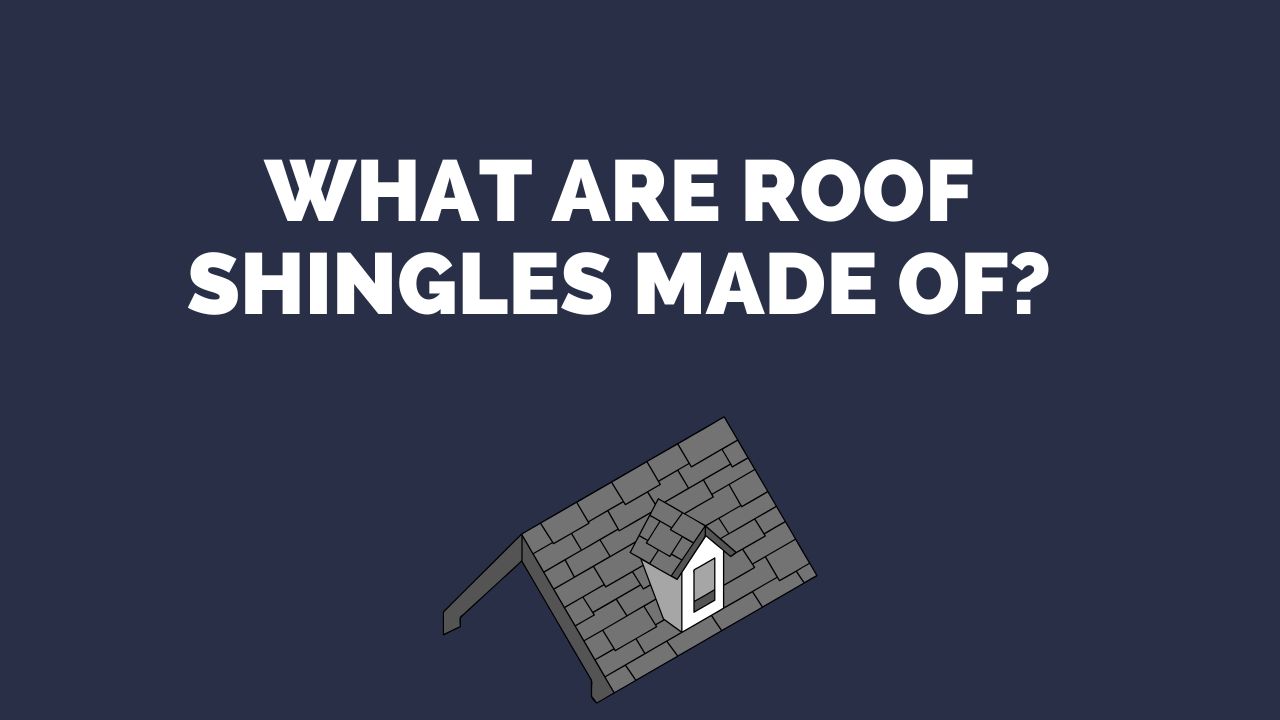What Are Roof Shingles Made Of?


When it comes to protecting your home, the roof does the toughest job—and roof shingles are the real heroes. But have you ever wondered what roof shingles are actually made of? Whether you’re planning a new roof or just curious, let’s break it down in simple terms.
What Are Roof Shingles?
Roof shingles are flat, overlapping pieces that cover your roof and protect it from rain, sun, snow, and wind. They come in different materials, styles, and colors—each designed for a specific climate, budget, and look. Think of shingles as your home’s “armor” that keeps it both safe and stylish.
Types of Roof Shingles and What They’re Made Of
Let’s look at the most common types of roof shingles, what they’re made of, and their pros and cons.
1. Asphalt Shingles
Material: Asphalt, fiberglass, and mineral granules
Asphalt shingles are the most popular roofing choice across the world. They’re affordable, easy to install, and come in many colors and designs.
- Fiberglass mat: Provides strength and flexibility.
- Asphalt layer: Makes the shingle waterproof.
- Mineral granules: Protect against UV rays and add color.
Lifespan: 20–30 years
Pros:
- ✅ Cost-effective and widely available
- ✅ Easy to install and repair
- ✅ Variety of colors and styles
- ✅ Works well in most climates
Cons:
- ❌ Shorter lifespan than premium materials
- ❌ Can crack in extreme temperature changes
- ❌ Not the most eco-friendly option
2. Wood Shingles
Material: Cedar, pine, or redwood
Wood shingles give your home a warm, natural, and timeless look. Cedar is the most common because it resists insects and decay naturally.
Lifespan: 25–40 years
Pros:
- ✅ Beautiful, natural appearance
- ✅ Eco-friendly if sourced responsibly
- ✅ Good insulation properties
- ✅ Lightweight and durable
Cons:
- ❌ Requires regular maintenance
- ❌ Can be prone to fire, mold, and rot
- ❌ Not ideal for very humid or wet climates
3. Metal Shingles
Material: Steel, aluminum, copper, or zinc
Metal shingles are modern, strong, and energy-efficient. They’re great for harsh weather conditions and can mimic the look of traditional shingles.
Lifespan: 40–70 years
Pros:
- ✅ Very durable and long-lasting
- ✅ Reflects sunlight, reducing cooling costs
- ✅ Resistant to fire, insects, and rot
- ✅ Lightweight and recyclable
Cons:
- ❌ Higher upfront cost
- ❌ Can be noisy during heavy rain or hail
- ❌ May dent under impact (e.g., hailstorms)
4. Slate Shingles
Material: Natural stone (slate rock)
Slate shingles are known for their beauty and unbeatable lifespan. Made from real stone, they add elegance and strength to any home.
Lifespan: 75–100+ years
Pros:
- ✅ Extremely durable and fireproof
- ✅ Low maintenance
- ✅ Luxurious and timeless look
- ✅ Natural material, eco-friendly
Cons:
- ❌ Very heavy – requires strong roof support
- ❌ Expensive material and installation
- ❌ Can crack if stepped on during maintenance
5. Clay or Concrete Shingles
Material: Natural clay or cement mixture
Common in warm and coastal regions, clay and concrete shingles are both beautiful and tough. Clay tiles are baked, while concrete ones are cast and hardened.
Lifespan: 50–100 years
Pros:
- ✅ Excellent resistance to heat, fire, and moisture
- ✅ Long-lasting and low maintenance
- ✅ Keeps homes cooler in hot weather
- ✅ Classic Mediterranean or Spanish-style look
Cons:
- ❌ Heavy – needs reinforced roofing structure
- ❌ Expensive to install
- ❌ Fragile if walked on
6. Synthetic or Composite Shingles
Material: Plastic, rubber, or polymer-based compounds
Synthetic shingles are made to look like natural materials such as slate or wood, but they’re lighter and more affordable. Many are made from recycled materials.
Lifespan: 30–50 years
Pros:
- ✅ Eco-friendly and lightweight
- ✅ Lower cost than natural slate or wood
- ✅ Resistant to mold, impact, and color fading
- ✅ Easy to install and maintain
Cons:
- ❌ Not as proven as traditional materials (newer tech)
- ❌ Quality varies by brand
- ❌ May fade over decades
Quick Comparison Chart
| Material | Look | Lifespan | Cost | Best For |
|---|---|---|---|---|
| Asphalt | Modern | 20–30 yrs | Low | All climates |
| Wood | Natural | 25–40 yrs | Medium | Dry climates |
| Metal | Sleek | 40–70 yrs | Medium–High | Harsh weather |
| Slate | Elegant | 75–100+ yrs | High | Luxury homes |
| Clay/Concrete | Classic | 50–100 yrs | High | Hot climates |
| Synthetic | Versatile | 30–50 yrs | Medium | Eco-friendly builds |
Final Thoughts
Roof shingles aren’t just about looks—they’re your home’s first line of defense. Each material has its strengths and weaknesses, so choosing the right one depends on your budget, location, and personal style.
If you want something budget-friendly, go for asphalt shingles. If you prefer longevity and luxury, slate or metal might be the way to go. And if you care about the environment, synthetic shingles are a great modern choice.
A strong roof starts with smart material selection—so always get advice from a trusted roofing expert before making your decision.